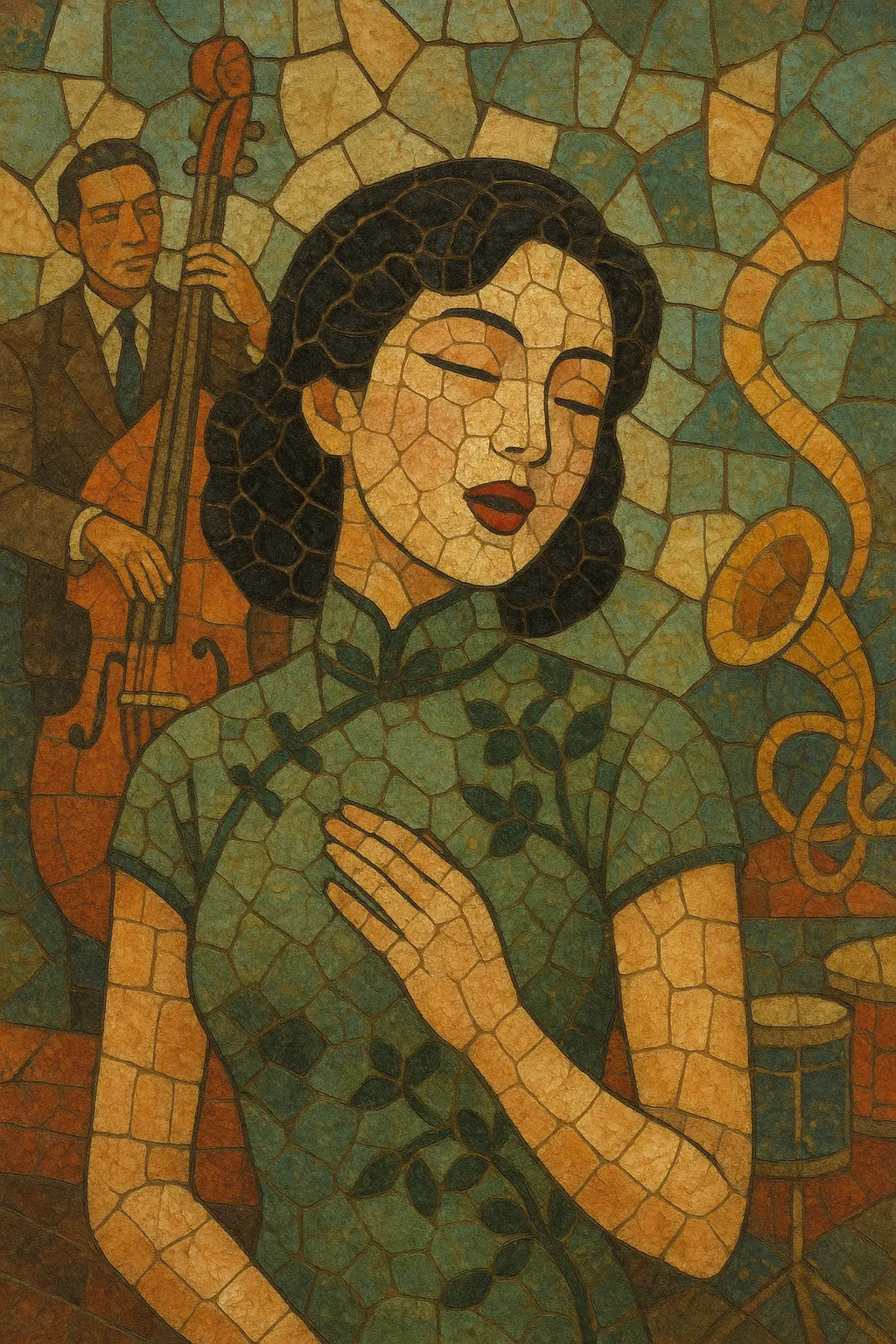Shidaiqu (时代曲, literally “songs of the era”) is the first modern Chinese popular music style, emerging in cosmopolitan Shanghai during the late 1920s.
It fuses Western dance-band idioms—especially jazz, swing, tango, and other Latin rhythms—with Chinese pentatonic melody, Mandarin lyrics, and the refined vocalism of Chinese opera and folk song.
Arrangements typically feature small jazz combos or studio orchestras with strings and horns, supporting clear, lyrical vocals that favor sentimental themes about urban life, romance, and modernity.
Shidaiqu flourished in 1930s–40s Shanghai film musicals and dance halls, before being suppressed as “yellow music” on the mainland after 1949; its artists and sound then migrated to Hong Kong and later Taiwan, laying the groundwork for Mandopop and subsequent Sinophone pop traditions.
Shidaiqu arose in Shanghai’s international concessions, where dance halls, cabarets, and recording studios exposed Chinese musicians to American and European jazz and dance-band styles. Composer–bandleader Li Jinhui and his Bright Moon Song and Dance Troupe are widely credited with pioneering the idiom, crafting songs that married Chinese pentatonic melodies and Mandarin lyrics to foxtrot, tango, and swing rhythms.
The genre blossomed alongside Shanghai’s film industry. Studio orchestras and dance bands backed singers in immensely popular film musicals, and the era produced the “Seven Great Singing Stars,” including Zhou Xuan, Bai Hong, Bai Guang, Yao Lee, Gong Qiuxia, Wu Yingyin, and Li Xianglan. Signature songs such as “The Wandering Songstress” (1937) and “Rose, Rose, I Love You” (1940) epitomized shidaiqu’s urbane blend of Eastern melody and Western harmony. Wartime disruptions during the Second Sino-Japanese War constrained production, but the style remained culturally dominant.
After 1949, the new PRC authorities condemned shidaiqu as decadent “yellow music,” effectively banning it on the mainland. Many artists, arrangers, and producers relocated to Hong Kong and later Taiwan, where the idiom evolved with new studio technologies and film industries. Its melodic, lyrical, and arranging practices directly informed the emergence of Mandopop and, indirectly, Cantopop.
From the 1980s onward, shidaiqu experienced waves of nostalgia. Reissues, film homages, and contemporary reinterpretations (from lounge jazz to orchestral revivals) reaffirmed its foundational status in Sinophone pop. Today it is recognized as a seminal synthesis that connected Chinese melodic sensibilities with global popular-music forms, shaping the DNA of C-Pop, Mandopop, and beyond.
Use a small jazz/dance-band core (piano, upright bass, drums), add saxophone/clarinet and trumpet for color, and sweeten with a string section or violin obbligatos. Acoustic guitar and accordion can reinforce tango/bolero flavors. Aim for polished, intimate studio textures.
Base grooves on swing, foxtrot, tango, or rumba at moderate tempos (≈ 80–120 BPM). Keep drumming light and danceable: brushes on snare for swing ballads, habanera patterns for tango, and gentle clave-inflected motion for Latin feels.
Combine Western functional harmony (I–vi–ii–V, circle-of-fifths motion, occasional secondary dominants) with Chinese pentatonic melodies. Favor lyrical stepwise motion, tasteful slides and turns, and clear, singable hooks. Use 32-bar AABA or verse–chorus forms with modulating bridges to heighten drama.
Write in Mandarin (or other Sinitic varieties historically associated with the genre) with themes of urban romance, longing, glamour, and modern life. Employ a light, clear timbre with controlled vibrato, gentle portamento, and precise enunciation. Storytelling and sentiment are central—let the vocal line sit forward in the mix.
Orchestrate call-and-response between voice and reeds/strings, use intro vamps, short instrumental interludes, and codas. Keep dynamics supple, spotlighting the singer. Subtle room ambience, close miking, and warm EQ emulate classic 1930s–40s studio sound.


